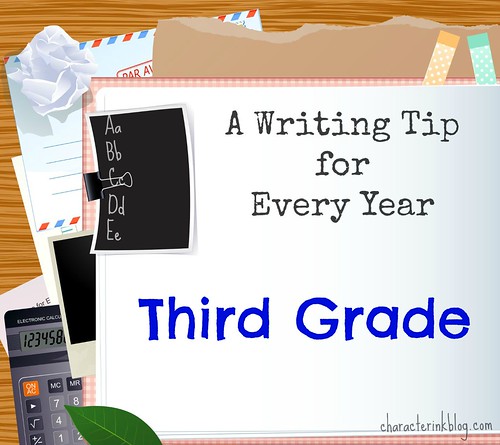Third Grade: Use a Question and Answer Template to teach this age group how to write a paragraph.
One of the biggest obstacles facing young writers is that we often do not teach them how to write. We have writing idea books galore. We study a topic in social studies or literature, and we tell our student to “write about it.” Even when we give a topic (“Write a paragraph about your dog”), a third grade student (okay, third grade boy!) will often say, “I don’t know what to write.”
Take a “Directed Writing Approach” with your students. (You can borrow that phrasing from me!) In a “Directed Writing Approach,” the student is directed every step of the way. For young students, this means that we give him the topic, help him see how to lay out his paper (outline), and give instruction on how to do the type of writing you are asking him to do. That is, no more lessons that say “write about this.”
One way that we can “direct” this age student is through a Question and Answer Template. (I use templates for students all the way through twelfth grade. They just get increasingly difficult. In elementary, the template might be a Q and A or Paragraph House. In middle school and beginning high school, I use many– Definition Paragraph, Quotation Paragraph, Story/Retelling Opening/Closing Paragraph, and Biographical templates. In upper high school, I use a Three P’s of Persuasion template. Templates give students the confidence (and skills) to write the type of writing they are being asked to write.
Using a Question and Answer Template at this level assures that your student will have something to say for however many questions you put in the template. For example, in the dog example. Write a list of questions down the page with lines for the student to write “note answers” for each question: (1) Type of dog; (2) Name of dog; (3) How you got the dog; (4) How long you’ve had the dog; (5) Interesting fact about your dog; 6) Funny fact about your dog; (7) Do you agree that “dog is man’s best friend”? Why or why not?
After he writes his notes on the lines, have him use those notes to write a paragraph by turning his template answers into sentences. Voila! He just found out what to write. He just created an outline. He just wrote a paragraph. (Even if he dictated the actual paragraph to you and you “penned” it, he still wrote a paragraph. Be sure he knows that!)
Note: For a gentle introduction to language arts, spelling, vocabulary, editing, and writing, check out my Christian language arts series, Character Quality Language Arts, Level Pre-A. (You can print off and try a one month sample here.) For writing/composition-only, check back frequently on my Meaningful Composition writing series. Books 2 I, 2 II, 3 I, and 3 II will be coming out over the next year! These books are fun, fun, fun!




